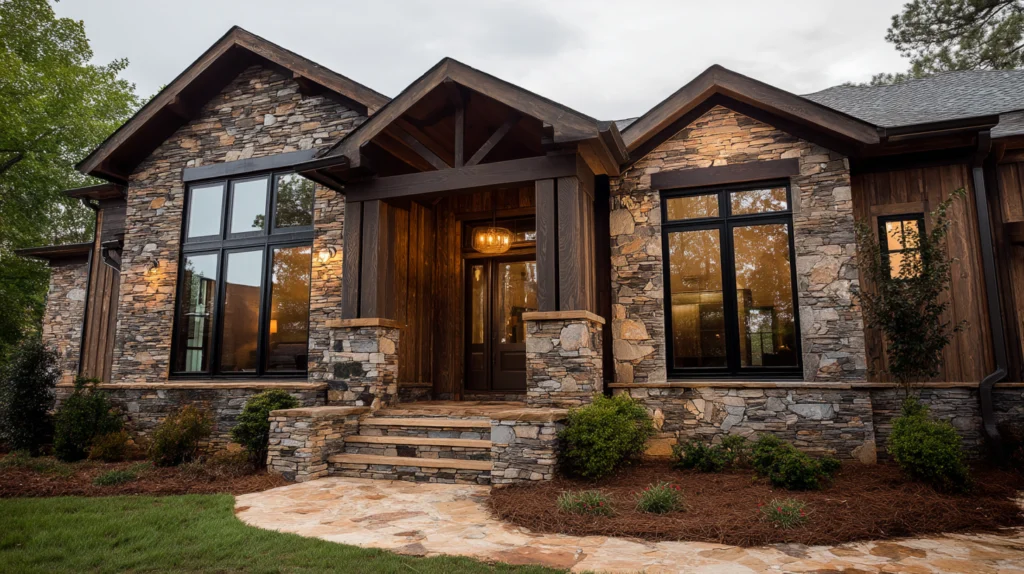When considering flat roof vs pitched roof, many homeowners and business owners struggle to make an informed decision. The choice of roof style affects cost, durability, aesthetics, usable space, energy performance, and long‑term value. Whether you are planning a roof replacement or new construction for a residential home or commercial building, it is critical to weigh the trade‑offs carefully.
At Cobex Construction Group, we guide homeowners through every step. In this article, we compare flat roofs and pitched roofs in detail, explain implications for architecture and maintenance, and help you choose the option that best meets your goals.
What Is the Difference Between Flat Roofs and Pitched Roofs?
To start, we’ll define the two major roof types and how they differ in form, materials, and function.
Flat Roofs (Low‑Slope, Slight Slope)
When we refer to a flat roof, what’s meant is a roof with a slight slope, often 1–3 degrees, so that water can drain off rather than pool. This design is common in commercial buildings, but increasingly used in modern residential architecture. A flat roof installation typically uses membrane materials like TPO, PVC, EPDM, or modified bitumen. Because the surface is almost horizontal, it can support solar panels, mechanical equipment, or even a roof deck if designed properly.
Pitched Roofs
A pitched roof (or steep roof) features sloping sides that shed rain and snow naturally. Common styles include gable, hip, shed, and cross gable. Materials include asphalt shingles, tiles, slate, or metal. The slope improves water drainage, reduces risk of leaks, and gives a classic or traditional architectural style to a home. In many residential homes, pitched roofs offer decades of reliable service with relatively less maintenance.
Pros and Cons of Flat Roofs
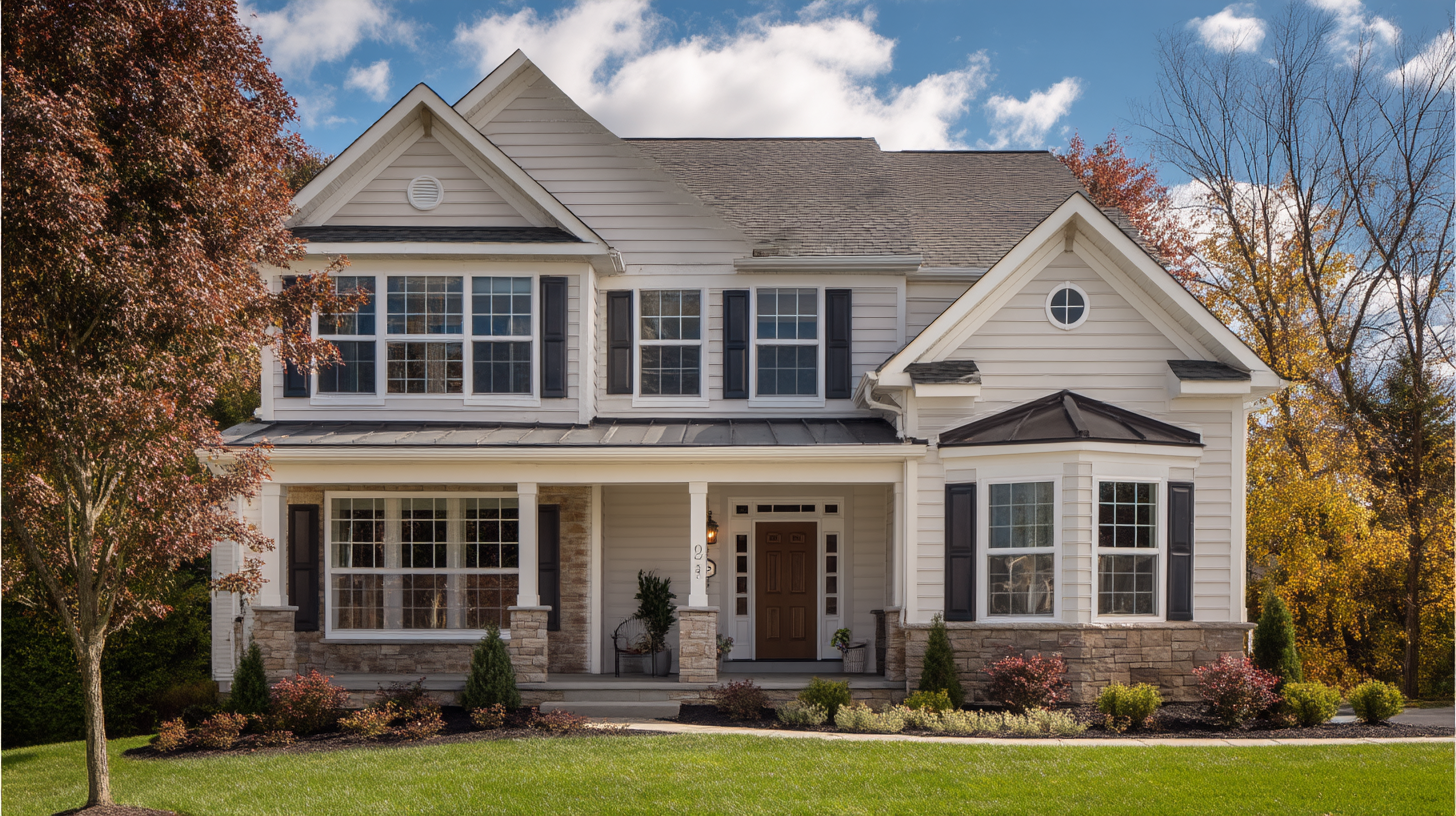
Let’s dig into the unique benefits and potential downsides of flat roofs, especially in the context of homes and commercial buildings.
Advantages of Flat Roofs
Modern aesthetic & curb appeal: A flat roof offers clean, minimalist lines that give a modern look to homes. If your architecture leans contemporary or midcentury modern, the flat roof can reinforce that design identity. And because it is rare in many neighborhoods, it can create a striking contrast with neighbouring properties.
Lower material costs & fewer materials: Because flat surfaces are simpler to cover, you often need fewer materials, less framing, and fewer complex joints, making flat roof construction generally cheaper in material costs and labor, especially for the same size footprint.
Usable space and flexibility: Flat roofs allow you to convert roof area into a roof deck, green space, or platform for solar panels. That makes the roof itself functional rather than wasted. You can walk on it more easily, inspect it, or host rooftop equipment without steep slopes.
Easier maintenance access: Because the surface is nearly horizontal, it is typically easier to access for inspections, cleaning debris, and making minor repairs. You don’t need special ladders or harnessing in many cases.
Drawbacks of Flat Roofs
Water pooling and drainage issues: One of the central risks for flat roofs is poor drainage. If water does not flow into drains or scuppers, water pooling can lead to leaks, membrane degradation, and failure of flashings. Properly designed slope and drainage are absolutely essential. More frequent repairs & ongoing maintenance: Flat roofs generally require more maintenance, which means periodic inspections, seam repairs, flashing checks, and debris removal. In harsher climates, you may see frequent repairs to patches, membranes, or drainage systems.
Shorter lifespan if poorly maintained: Even with good membranes, a flat roof may have a shorter lifespan compared to a well-built pitched roof, especially where weather extremes or UV exposure accelerate aging. Without care, flat roofs can degrade faster. Risk in heavy rainfall or snow: In regions with heavy rainfall or snow, flat roofs are more vulnerable. Melting snow, freeze-thaw cycles, or clogged drains can impose structural burdens or lead to structural damage from water infiltration.
Limited design fit for traditional homes: If your home is a classic or historic design, a flat roof may look out of place. It may conflict with neighborhood norms or not provide the classic look many buyers expect.
Pros and Cons of Pitched Roofs
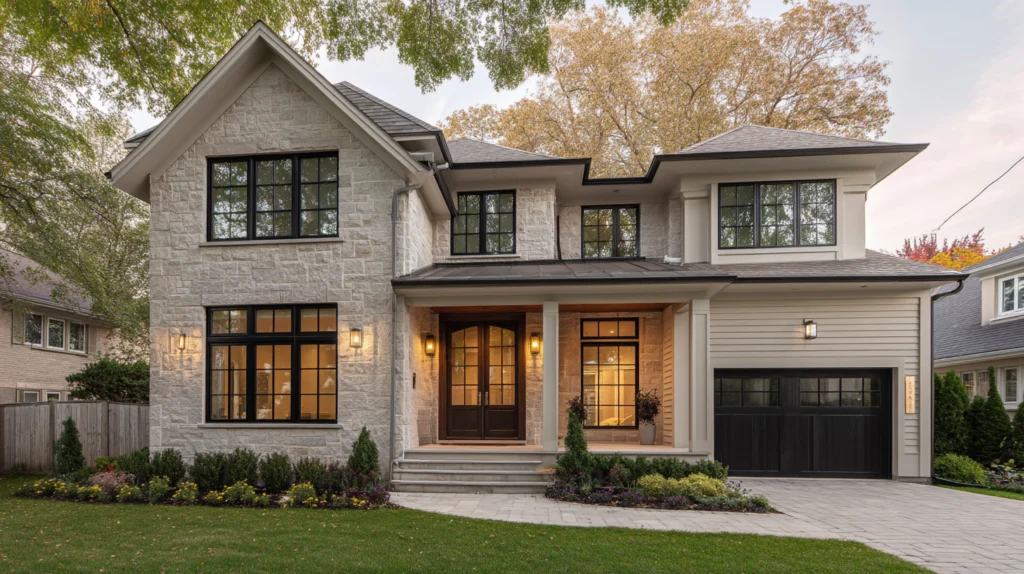
Now let’s look at what pitched roofs offer and where they may have limitations.
Advantages of Pitched Roofs
Superior drainage & leak resistance: Pitched roofs excel at shedding rain and snow, thanks to sloped surfaces that prevent water pooling. This lowers the risk of leaks in most weather conditions. In storm events or heavy rain, pitched roofs perform reliably. Longevity and durability: Because they avoid water staying on the surface, pitched roofs often enjoy a longer lifespan, especially when built with quality (asphalt shingles, tile, metal) and maintenance. They resist wear better in harsh conditions, making them a durable long‑term choice.
Less maintenance over time: Pitched roofs typically demand less maintenance because they shed water and debris more effectively, reducing the burden on flashing, membranes, and joints. For many homeowners, that means fewer occasional repairs. Better insulation & attic ventilation: Pitched roof designs often permit spaces for insulation and natural ventilation in roof cavities or attics, which help regulate temperature and improve energy efficiency in both summer and winter.
Timeless aesthetic and resale appeal: Many neighborhoods expect or favor pitched roofs, especially in traditional architectural styles. A pitched roof can enhance curb appeal, help with resale value, and feel more familiar to buyers. Adaptable for many home styles: In traditional homes, pitched roofs align with styles like Craftsman, Spanish, Colonial, or Tudor. They integrate more seamlessly with existing architectural vocabulary.
Drawbacks of Pitched Roofs
Higher upfront cost & more materials: Pitched roofs require stronger framing, trusses, more complex geometry, and more materials. Labor is more involved. All that adds to cost in the initial roof installation or roof replacement project. Limited usable space: The sloping form means you cannot easily use the roof surface itself for decks or equipment without special design adaptations. So unlike flat roofs, you lose the chance for a roof deck or solar-mounted flat platform without mounting systems.
Challenging maintenance access: Working on steep slopes is more hazardous. Repairs, inspections, or cleaning may require harnesses, scaffolding, or extra safety precautions. That can elevate maintenance costs. Potential for wind uplift: In areas subject to strong winds, sloped surfaces can suffer uplift pressure, especially at ridges or edges. Proper engineering and fastening are essential to resist wind damage.
More waste and complexity in design: The complexity of peaks, valleys, dormers, and intersecting planes introduces more joints, flashing, and risk points. The more complex the architectural style, the more detail work and potential for leaks.
How to Choose the Right Roof Style for Your Home or Commercial Building
Here are the key factors to evaluate when determining whether a flat or pitched roof fits your project best.
Climate and Weather Conditions
Weather plays a significant role. In regions with frequent rain and snow or seasonal storms, a pitched roof offers strong advantages in shedding moisture. In milder, drier climates (like many parts of California), a flat roof can perform well if properly designed and maintained.
If your property gets occasional heavy storms or snow, the pitched roof gives extra insurance against drainage failure. But for homeowners in low‑precipitation zones who prioritize modern design, a flat roof may be an excellent choice.
Architectural Style and Neighborhood Context
Your architectural style and surrounding homes matter. A modern aesthetic home typically pairs beautifully with a flat roof, reinforcing sleek lines and minimalist character. Conversely, classic, colonial, craftsman, or traditional homes usually look best with pitched roofs.
Because homeowners care about resale value and blending in, your roof should not feel too out of place relative to neighbouring properties. A pitched roof often provides better conformity in classic or traditional neighborhoods.
Budget, Material Costs, and Long Term Value
While a flat roof is often generally cheaper upfront (less complex framing, fewer materials), you must balance that against ongoing maintenance and frequent repairs. Over decades, the costs of upkeep may narrow the financial edge.
A pitched roof will tend to require more materials and labor up front, but because it usually requires less maintenance and fewer repairs, the long term value often favors the pitched option in many cases.
As you plan your roof replacement or new roof, it helps to run lifecycle cost comparisons. Cobex can help you evaluate based on your site, climate, design goals, and budget.
Usable Space, Solar, and Roof Deck Potential
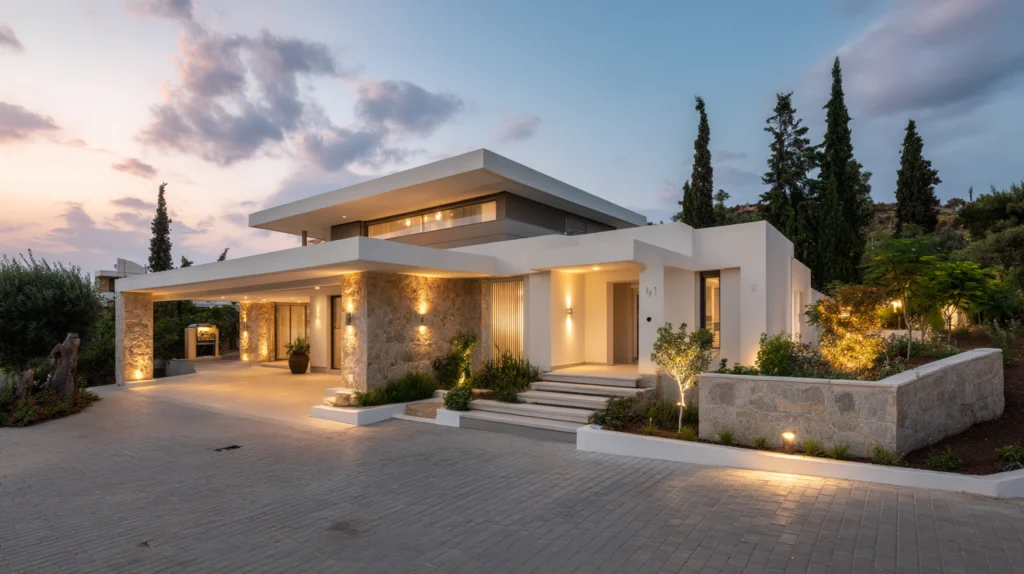
One of the most compelling arguments for flat roofs is usable space. You can build a roof deck, plant a garden, place seating, or install solar panels in optimal orientation. This turns the roof into a functional area rather than just covering.
Although pitched roofs can support solar installations, they may require tilted racks or special framing, reducing efficiency. The flat roof offers a flexible platform for PV layout, making it ideal for homeowners prioritizing solar power.
If your top goal is maximizing rooftop usability, a flat roof wins. If your priority is long-term robustness and low maintenance, pitched may be the more secure option.
Structural and Engineering Considerations
Not every building can support either roof style without adaptation. A flat roof may demand stronger waterproofing, careful drainage, and high-quality membrane work to prevent leaks. A pitched roof requires structural support for sloping framing, load from snow or wind, and proper fastening.
If your home or commercial building is undergoing a major remodel or expansion, you may have to reinforce the structure regardless of roof type. When considering a conversion (flat to pitched, or pitched to flat), expect significant engineering, permitting, and cost execution.
Longevity, Maintenance, and Repair Patterns
Over time, pitched roofs tend to last longer and have fewer repair demands because water is rarely allowed to sit on them. Their exposure patterns are more forgiving, and wear tends to be more gradual.
Flat roofs, even when properly maintained, will usually require more maintenance and occasional spot repairs to seams, flashings, and edges. Because the risk of leaks is higher, proactive upkeep is essential.
If you are planning to stay in the building for decades, the gap in ongoing maintenance may become a deciding factor.
Can You Convert a Flat Roof to a Pitched Roof (or Vice Versa)?
Yes, though it is not simple. You can change roof type, but doing so requires structural and design overhaul.
When converting a flat roof to pitched, you need to redesign the framing, add slope, adjust load paths, revise drainage systems, and obtain permits. You may also need to raise parts of walls or change the architectural silhouette. That is a significant construction project, akin to adding another floor in some cases.
Conversely, converting a pitched roof to flat is also complex. You must remove sloping framing, reinforce load paths, patch or rebuild walls, and ensure that waterproofing and drainage are robust. Both conversions are rarely cost‑effective unless there’s compelling architectural or functional motivation.
Cobex has experience with these major transformations. If you’re exploring a conversion, we’ll help you evaluate feasibility, cost, and expected benefits for your specific property.
What Cobex Recommends for California Homeowners and Building Owners
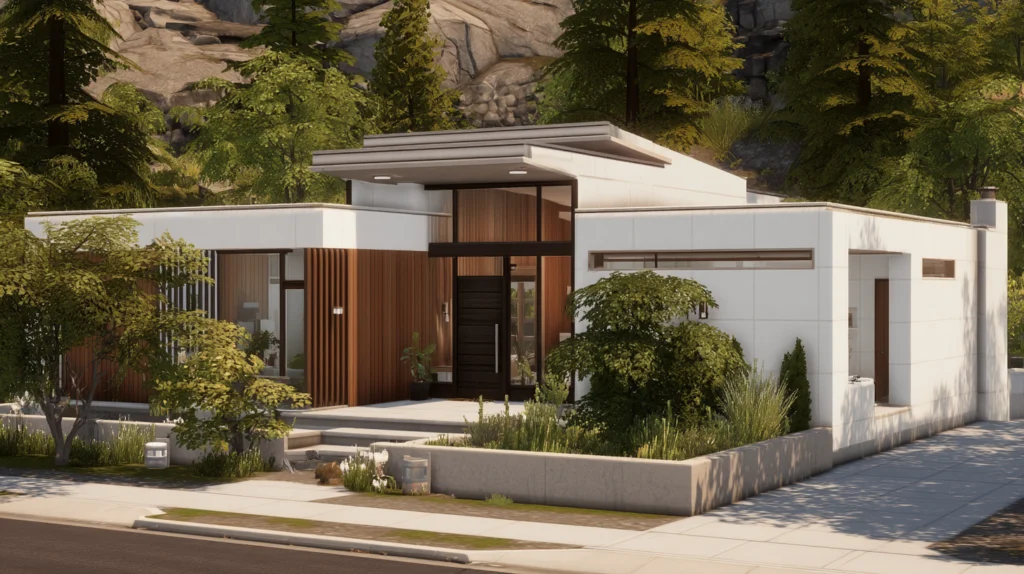
At Cobex, we don’t believe in one-size-fits-all solutions. Instead, we help you make an informed decision by understanding your location, architectural goals, and long-term budget. Here’s how we typically guide clients:
- If your priority is low maintenance, durability, and classic curb appeal, we often recommend a pitched roof, especially in more traditional neighborhoods or in areas with moderate rainfall or snow.
- If your design is modern, minimal, or you plan to use your roof for solar panels or as a deck, a flat roof may be the better fit.
- In mild climates with low precipitation, a well-built flat roof with high-quality materials and excellent drainage can perform reliably over time.
- We always evaluate structural integrity, membrane specification, flashing details, and warranty coverage to ensure your roof performs.
Because we operate in Sacramento, Roseville, Redding, and surrounding communities, we know local climate conditions, permit requirements, and design expectations. We guide homeowners and owners of commercial buildings to select the roof type that delivers the optimal balance of aesthetics, performance, and longevity.
FAQs About Flat Roofs vs Pitched Roofs
Is a flat roof cheaper than a pitched roof?
Often, yes, flat roof installation can require less framing, simpler geometry, and fewer materials, making it generally cheaper up front. But over time, repair and maintenance costs may offset those savings.
How long do flat roofs last?
When built with high-quality materials and properly maintained, modern flat roofs can last 20‑30 years or more. But in harsh climates or under poor maintenance, they may experience a shorter lifespan.
Do flat roofs leak more than pitched roofs?
Because water may linger on flat surfaces, flat roofs are more susceptible to leaks, especially if drainage is inadequate. Proper design, flashing, and regular inspection help mitigate that risk, making leaks rare if well built.
Can I walk on a flat roof?
Yes, many flat roofs are walkable and can support foot traffic for inspections or rooftop use. But always confirm structural capacity before walking or placing loads.
Are pitched roofs more energy efficient?
They can be. Pitched roofs often allow for better ventilation and insulation in attic spaces, improving energy efficiency. But a flat roof can also be energy efficient when using reflective membranes, rooftop solar, or green roof designs.
Which roof type is better for solar panels?
Because flat roofs provide an unobstructed, level surface, they often make solar panel installation easier, with higher flexibility in orientation. You can angle panels optimally without being constrained by roof slope. However, pitched roofs can also support solar systems with rack mounting or tilt adjustments.
How often should a flat or pitched roof be inspected?
We recommend annual inspections for both roof types, and especially after storms, strong winds, or debris accumulation. Proactive inspection helps catch issues early, minimizing repair costs.
Can I convert a flat roof into a pitched roof later?
Yes, but it’s a major construction project involving structural, permitting, and architectural modifications. It’s best to choose your roof style at the time of major renovation.
Conclusion and Trusted Next Steps
Choosing between flat roofs and pitched roofs is more than an aesthetic decision. It involves long-term thinking about maintenance, repair patterns, longevity, energy performance, and architectural integration. For residential homes, a pitched roof often offers fewer surprises and greater ease. But for modern aesthetic homes or where rooftop usage is vital, flat roofs can deliver outstanding value when designed and maintained well.
If you are planning a new roof, roof replacement, or a large renovation, don’t leave this decision to guesswork. Let Cobex Construction Group help you assess the best path forward. We serve homeowners and commercial property owners across Sacramento, Roseville, Redding and beyond.
Schedule your free estimate with our team today to explore which roof style is ideal for your property, and get guidance you can trust from a trusted local roofing contractor.
